
A lot may have changed in the last century or so, but some of life's nagging problems are as relevant today as they were to our ancestors. For that reason, some vintage tips and tricks from days long gone can still help us solve everyday issues - after all, the facts of science haven't changed, so if these solutions worked then, they must still work now! British tobacco firm Gallaher's included a series of wonderful picture cards inside packets of cigarettes, which helped their customers get to grips with common problems. Not only do the cards look great, but they can provide all of us with some handy tips as well, and a collection of them are now on display at the New York Public Library.
1. Separate Two Drinking Glasses
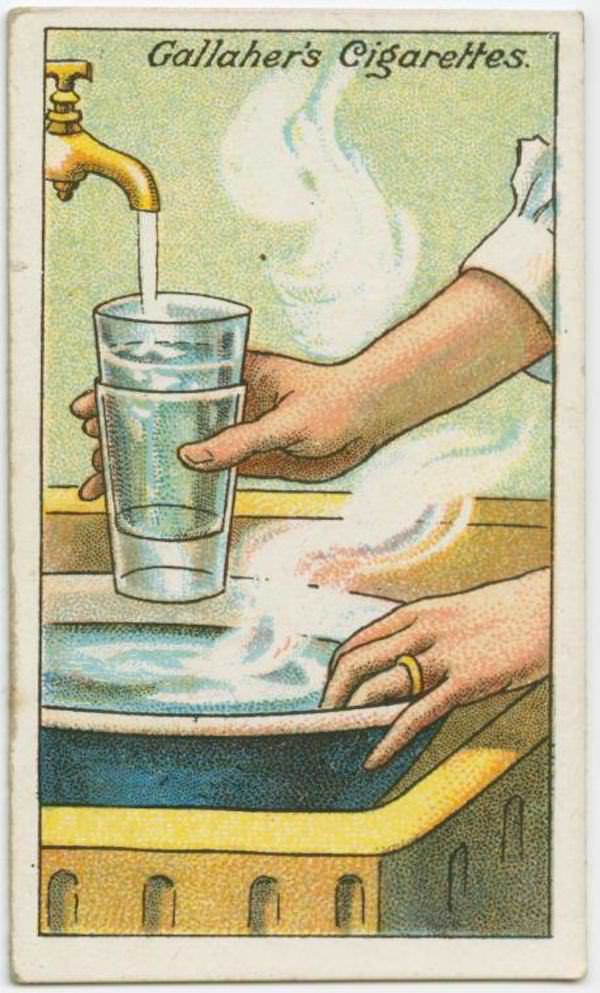
Instructions: When two glass tumblers stick together, there is a danger of breakage in trying to separate them. The simplest and most effective method of releasing the glasses is to put cold water in the upper one and place the lower one in warm water. They will be found to separate at once.
2. Remove a Splinter
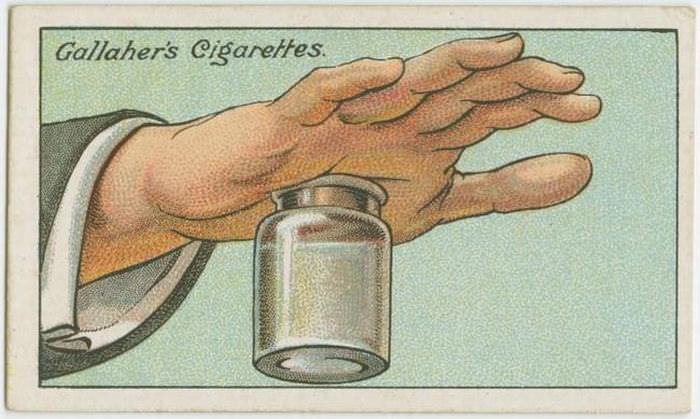
Instructions: Fill a wide-mouthed bottle with hot water nearly to the brim, and press the affected part of the hand tightly against the mouth of the bottle. The suction will pull down the flesh, and steam will soon draw out the splinter.
3. Increase Your Lung Capacity (perhaps with today's knowledge, this does seem a slightly ironic matter for a cigarette company to target!)
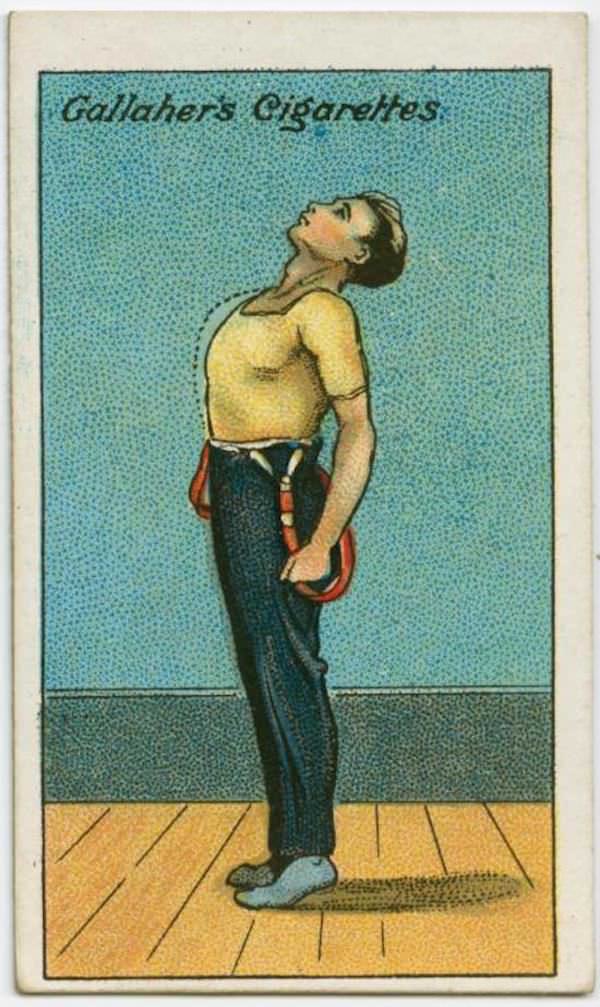
Instructions: Stand erect on the balls of the feet with the head held well back. Then inhale deeply until the lungs are fully inflated, gradually exhale, allowing the chest to sink first, followed by the lungs. Repeat exercise several times both morning and evening.
4. Pick Up Broken Glass
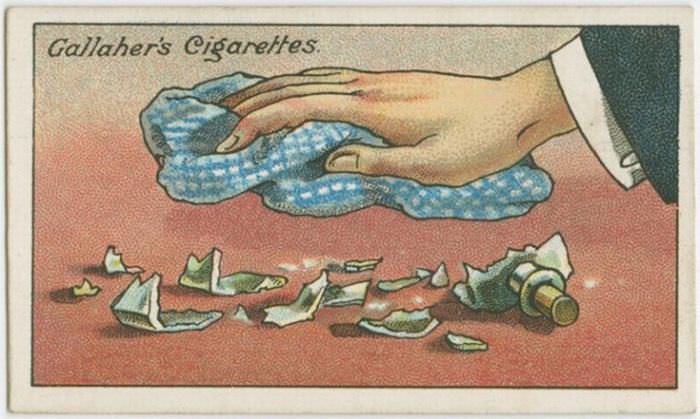
Instructions: To pick up broken glass quickly and cleanly, a soft damp cloth will be found to be most effective, for it takes up the small splinters. The best plan is to use an old rag that can be thrown away with the glass.
5. Make Your Shoes More Comfortable
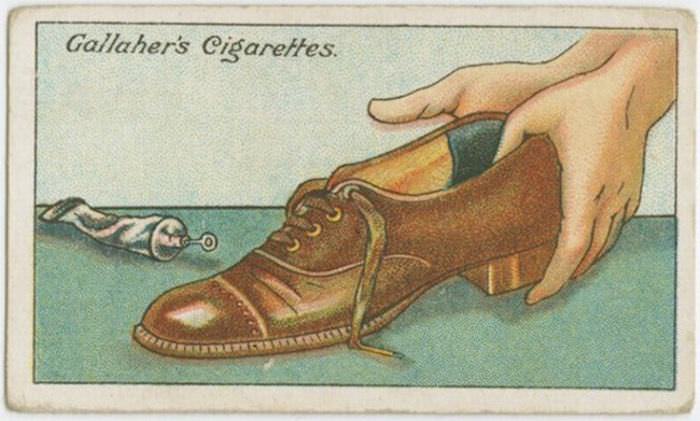
Instructions: A pair of loose shoes can be made to fit comfortably by fixing (with seccotine) a piece of velvet or velveteen inside the heel as shown in the picture. Care must be taken to see that no wrinkles are left in the velvet.
6. Treat a Sprained Ankle
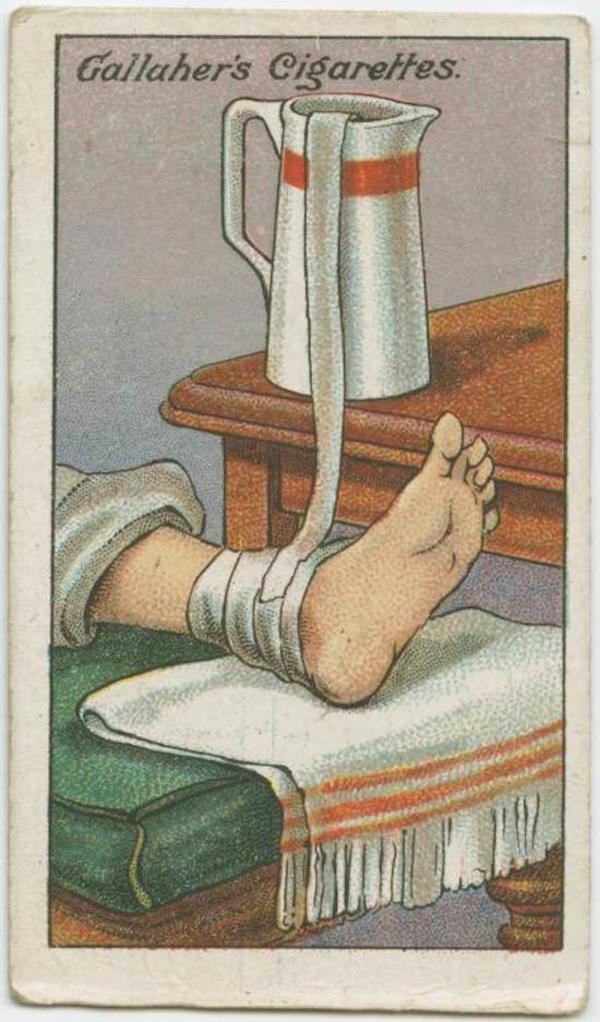
Instructions: Elevate the injured joint and wrap in cloths wrung out in cold water. The picture shows how to keep the cloths constantly wet without having to change them. A jug of water is placed higher than the injured limb, and a strip of linen with one end in the jug and the other end resting upon the wrapping of the sprained joint, is all that is necessary. The water will pass from the jug to the compress by way of the linen strip.
7. Carry a Heavy Jug Safely
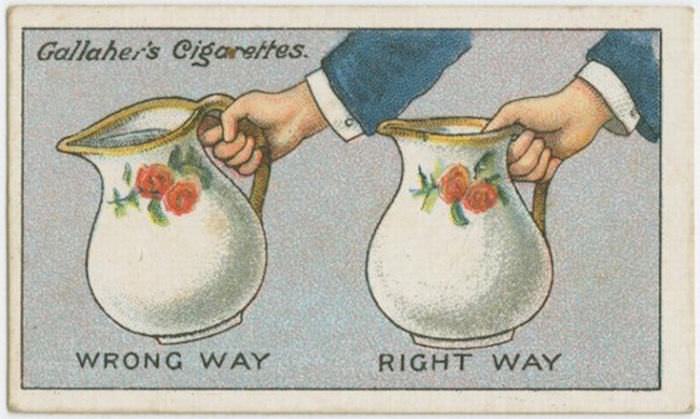
Instructions: The correct way to hold the jug is shown in the right-hand sketch. This prevents the weight from pulling the jug down, spilling what it contains, as is likely to happen if carried the other way.
8. Keep Flies Away from Your Trash Can
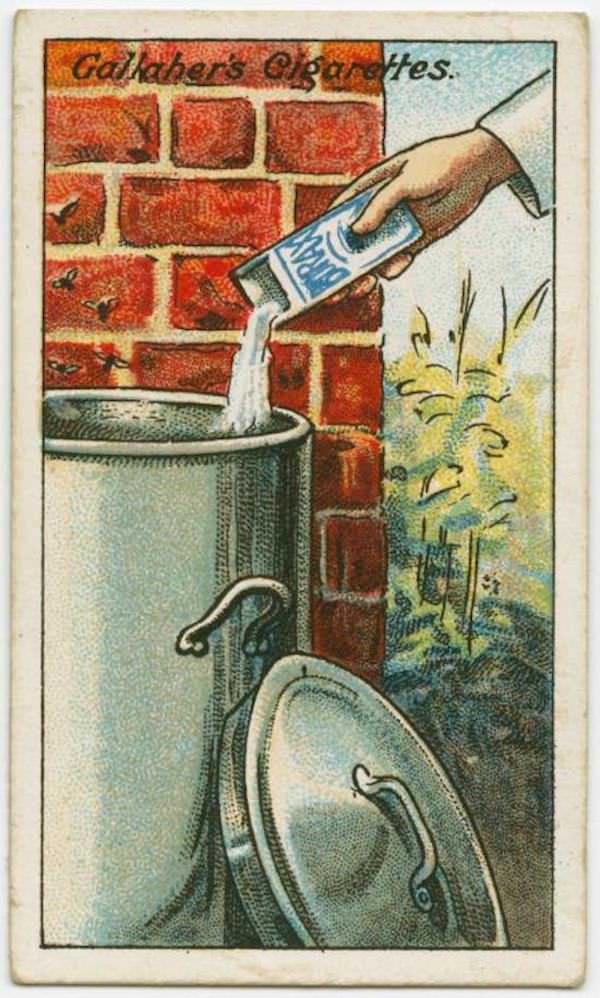
Instructions: As the result of experiments it has been found that a small amount of ordinary Borax sprinkled daily in the dustbin, which is one of their favorite haunts, will put a stop to the breeding of flies.
9. Stop Your Eye Glasses from Fogging Up
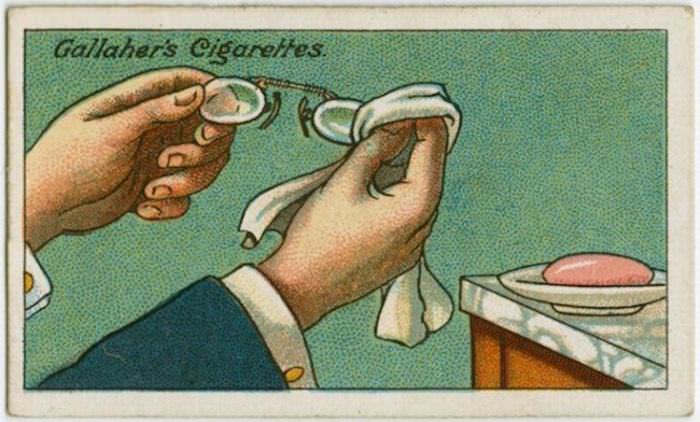
Instructions: The moisture which collects on eyeglasses causes a great deal of trouble, but if the glasses are rubbed daily with soap, and well polished afterward, a very thin, invisible film of soap remains, which has the effect of preventing the condensation of moisture on the glass.
10. Stop a Vase from Being Easily Toppled by a Pet or Child
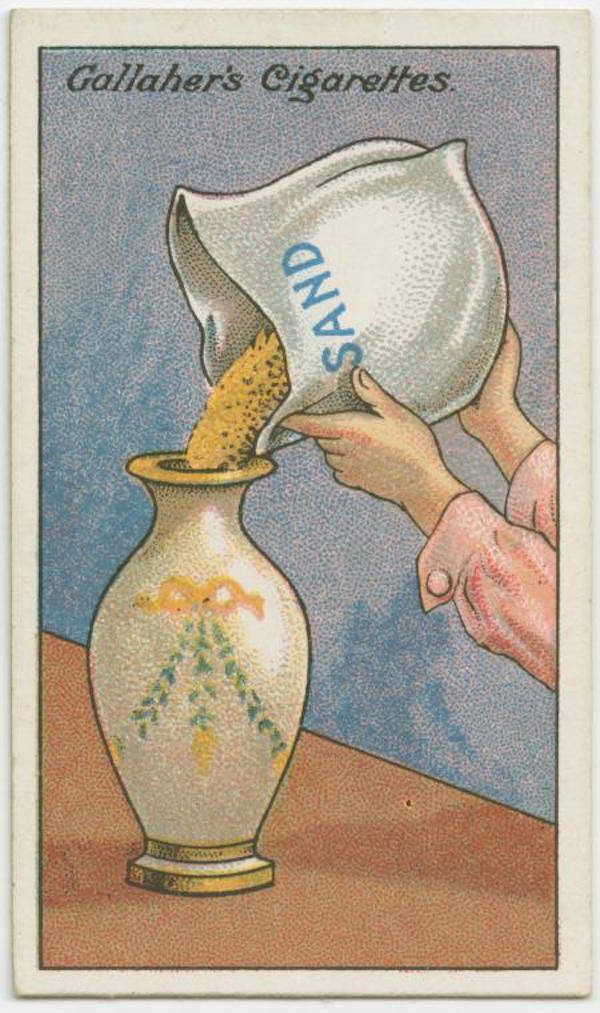
Instructions: Partly fill the vase with sand, which, acting as a weight, keeps it upright and firm on its base. This idea is particularly useful in the case of vases which are inclined to be top-heavy.
11. Safely Remove a Stuck Nail
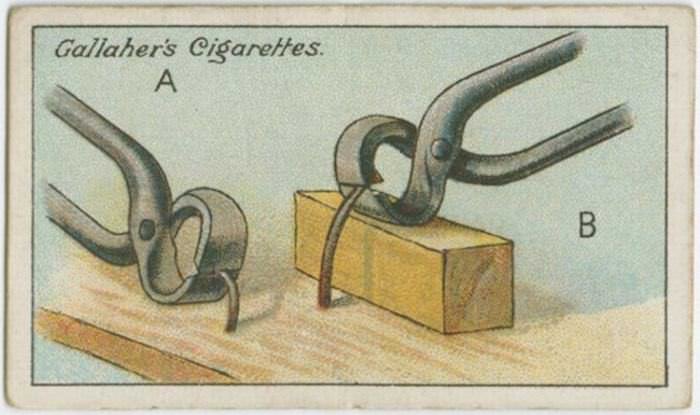
Instructions: It is often rather difficult to pull out a long nail from wood in which it has been driven, for when drawn out a short distance as in A, there is no purchase from which to pull it further. If, however, a small block of wood be placed under the pincers, as in B, the nail can be pulled right out without difficulty.
12. Remove Water Stains from Leather Shoes
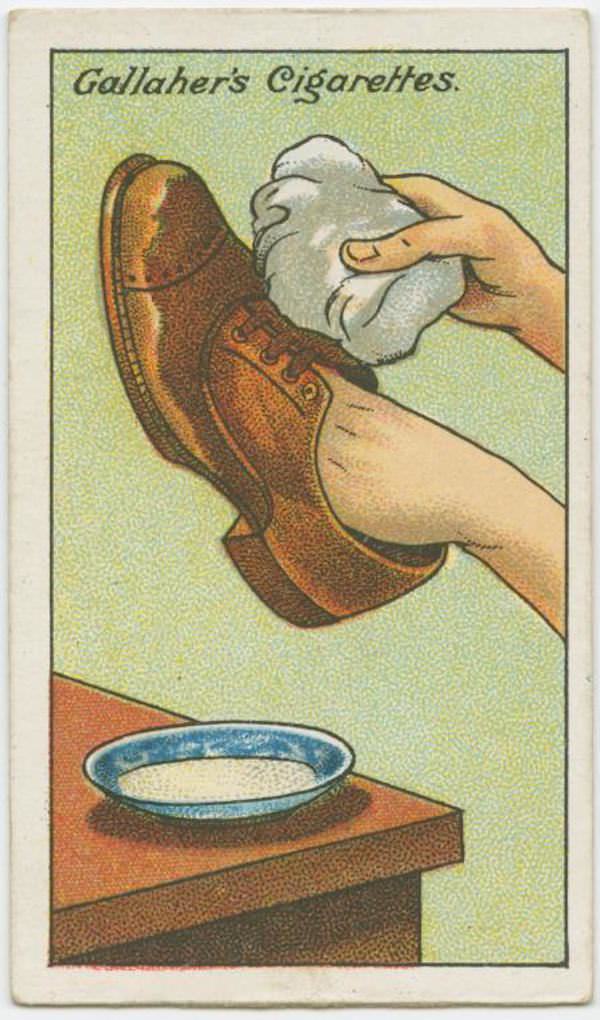
Instructions: Such stains can be removed by washing the shoes over with a preparation composed of a piece of washing soda, about the size of a chestnut, dissolved in two tablespoons of hot milk. When dry, the shoes should be polished regularly, and the stains will be found to have disappeared.
13. Judge Upcoming Weather Changes by Sight
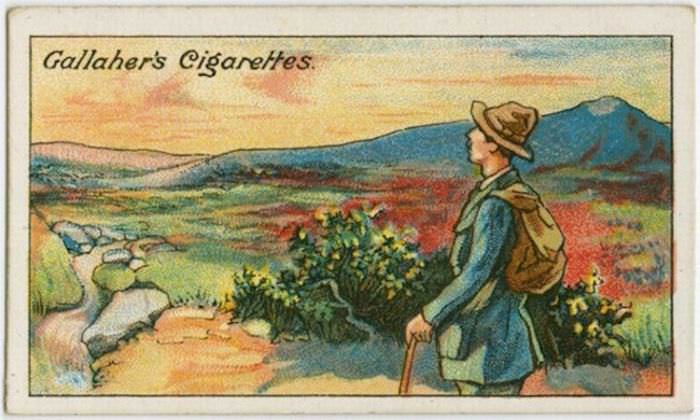
Instructions: The traveler, setting off in the early morning, will find a fairly sure guide as to the weather he is likely to encounter by watching a very small distant cloud. If the cloud grows gradually larger, then unsettled, rainy weather will probably come. But if the cloud decreases in size, the day should be a fine one.
14. Strike a Match When in Breezy Conditions
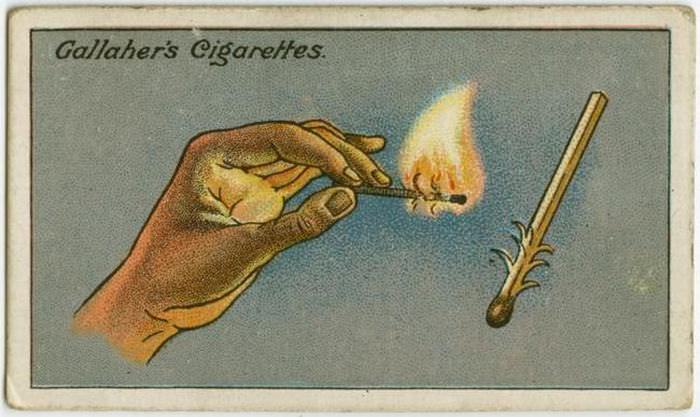
Instructions: The familiar difficulty of lighting a match in a wind can be, to a great extent, overcome if thin shavings are first cut on the match towards its striking end, as shown in the picture. On lighting the match the curled strips catch fire at once; the flame is stronger and has a better chance.
15. Make Your Fire Extinguisher (useful if you failed to strike the match correctly!)

Instructions: Dissolve one pound of salt and half a pound of sal-ammoniac in two quarts of water and bottle the liquor in thin glass bottles holding about a quart each. Should a fire break out, dash one or more of the bottles into the flames, and any serious outbreak will probably be averted.
16. Finally...Keep Your Plants Watered When You're Away (from rival manufacturer Wills's Cigarettes)
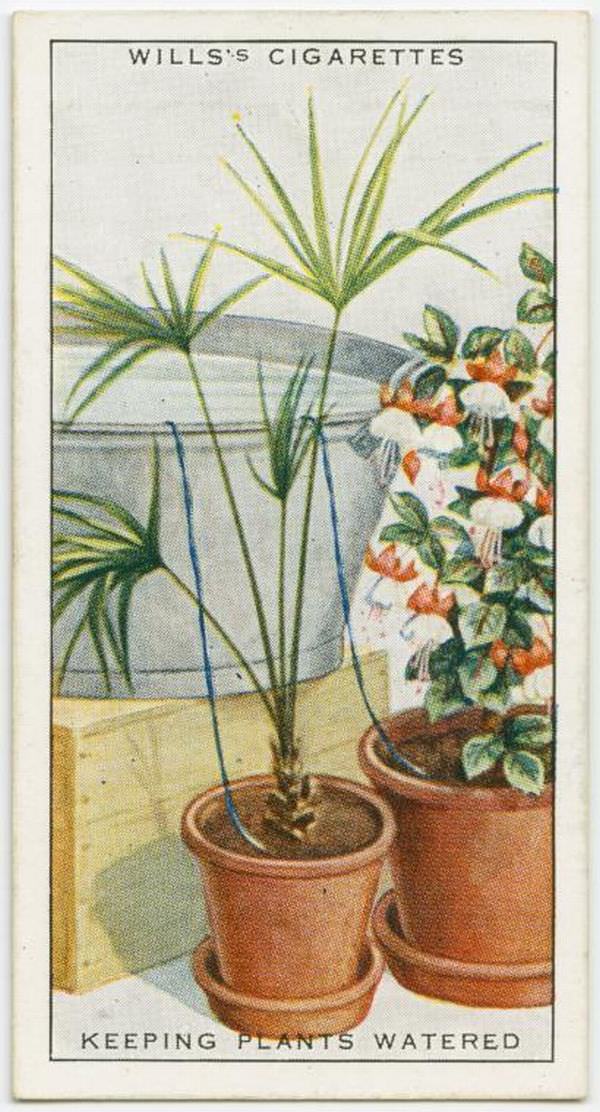
Instructions: Fill a large pail with water, and stand it a little above the level of the plants and group round or near as many plants as practical. Loosely plait two or three strands of wool together, immerse completely in water, and place one end in the pail, weighted, and touching the bottom. Rest the other end on the soil: a separate plait of wool is advisable for each pot.